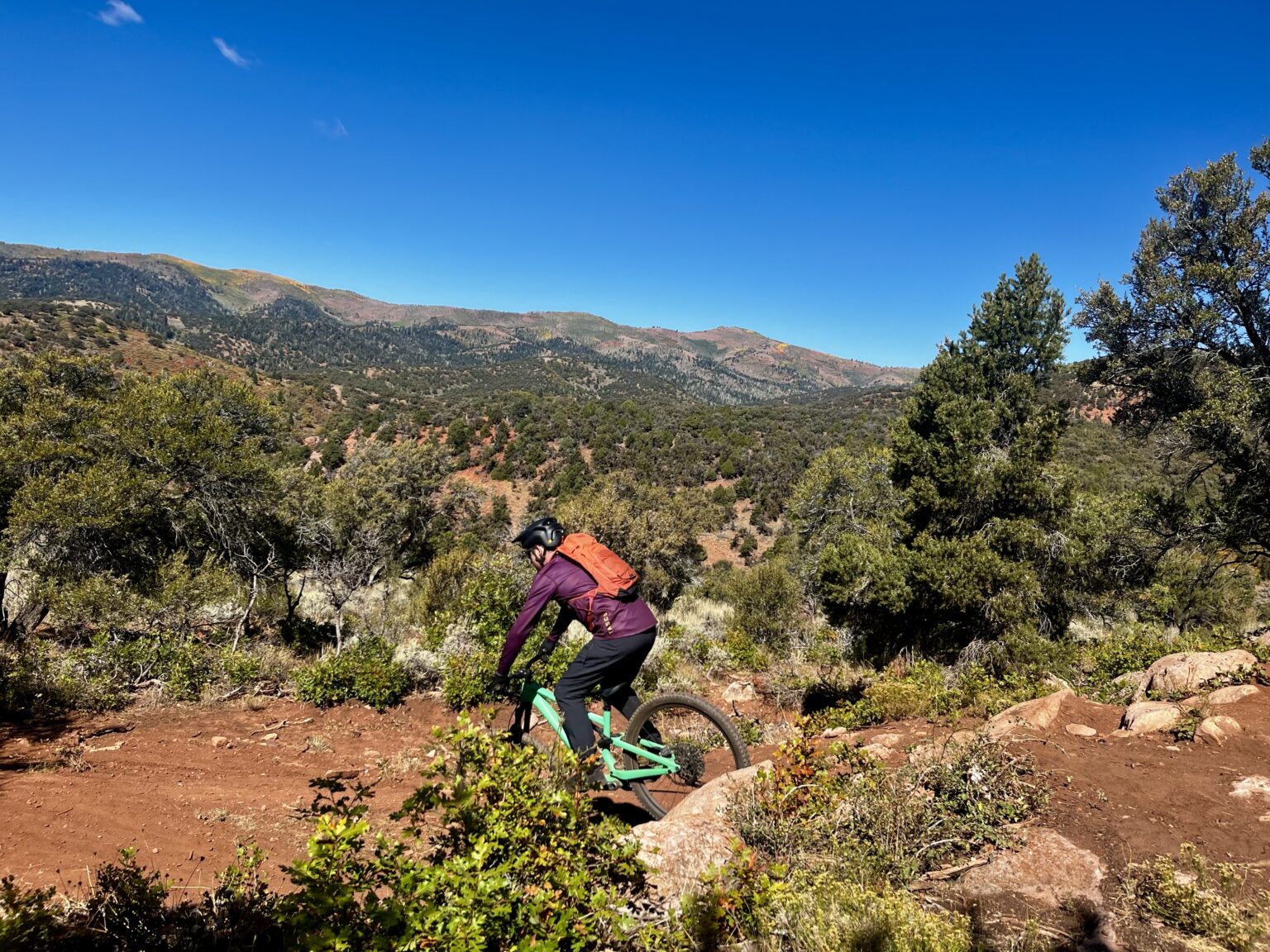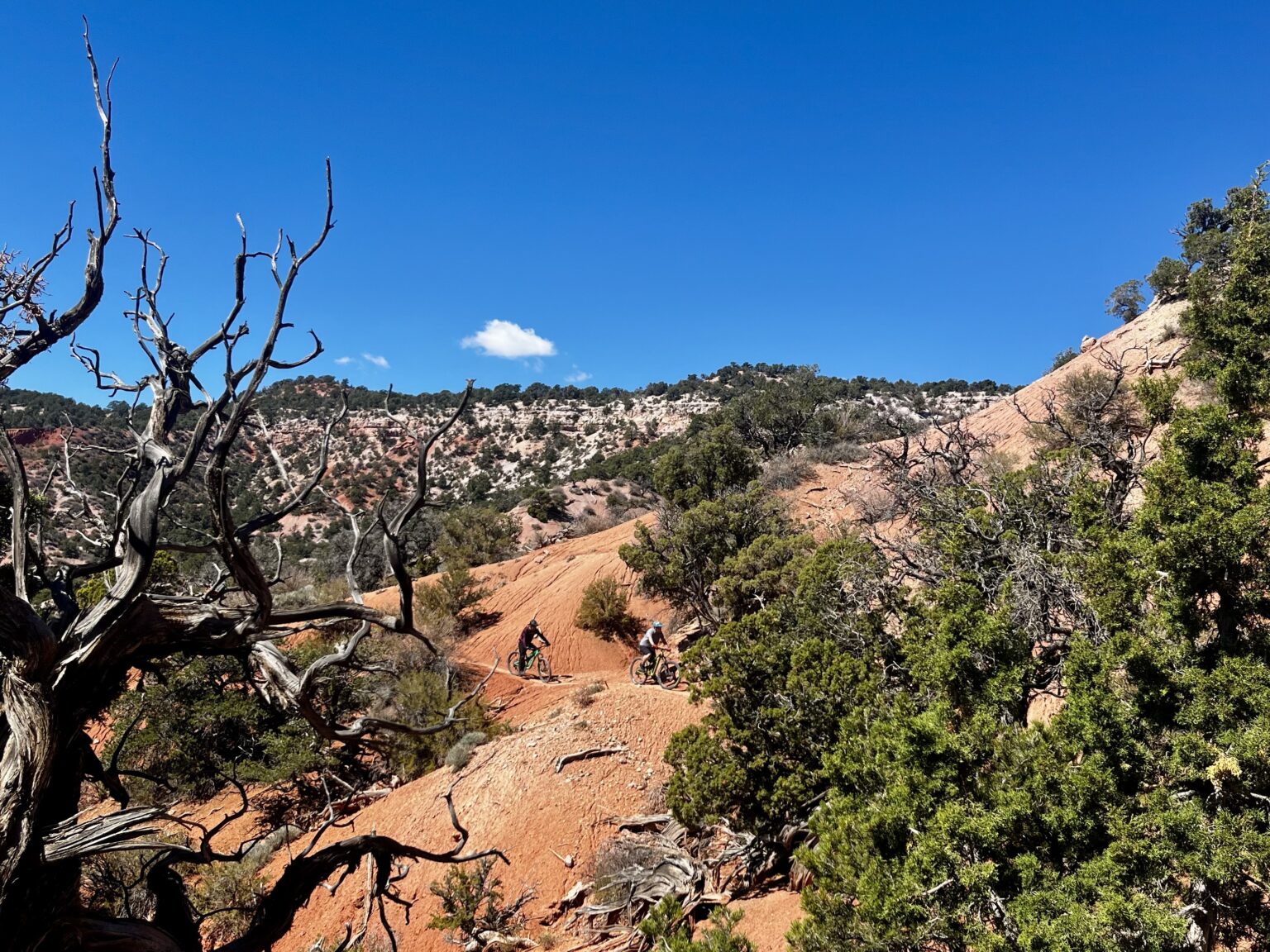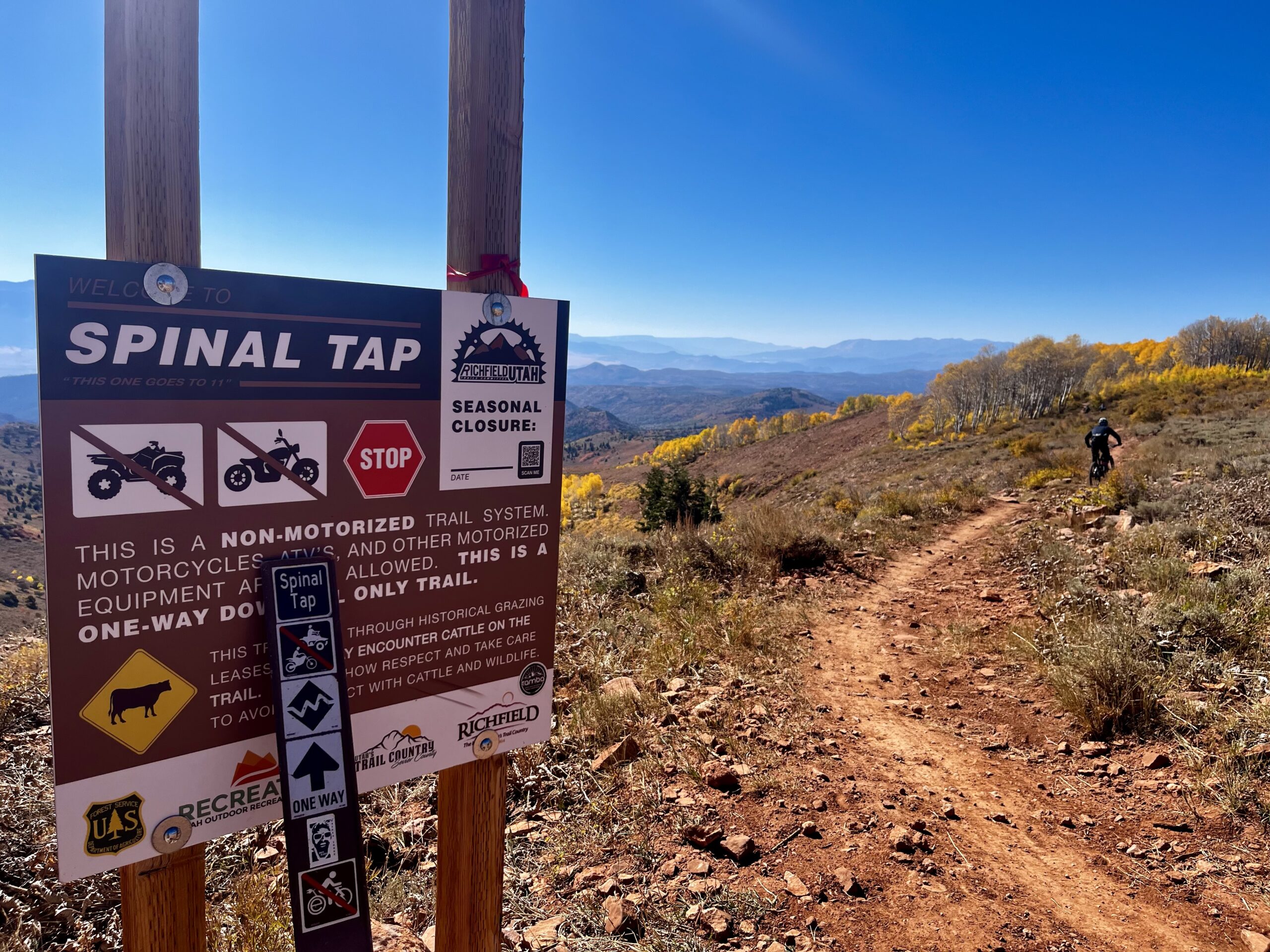Richfield is a small town located in Sevier County, roughly three hours south of Salt Lake City, on the doorstep of southern Utah. Like much of Utah, the area is known for its outdoor activities — hunting, fishing, and, don’t forget the ATVs.
Miles and miles and miles of ATV trails surround Richfield. ATVing is such a popular hobby that it is legal to ride quads, side-by-sides, and other OHVs on city streets.
But OHV opportunities aren’t all the city has to offer. On the west side of Interstate 70 is the Pahvant Trail System, home of one of the most impressive trails I’ve ever ridden — Spinal Tap.
This is Spinal Tap…Richfield, Utah, that is

Bordering Richfield is the Pahvant Range, with elevations quickly climbing to six and seven thousand feet just outside the city, and eventually topping out above 10,000. Just west of downtown — like, ride your bike from the hotel — is the Pahvant Trail System.
The system began just a few years ago in 2019. Volunteers and high school students spearheaded the project, digging approximately 16 miles. And they worked fast. A few years later, the Pahvant Trail System had approximately 38 miles spread across 30 trails.
Among these trails is a monster. This monster is the main reason I came to Richfield; the trail that many have spoken of recently. This is the trail finding its way to the top of many “Best Trails” lists.
This is Spinal Tap.
I mean, Spinal Tap is the name of the phenomenal trail in the Pahvant Range. It is also the name of an incredible mockumentary, but that’s for another time.
We came to ride Spinal Tap, with nearly 5,000 feet of descending across 20 miles. Trails with these stats are things of legend that, unfortunately, often don’t live up to the hype.
So did Spinal Tap live up to the hype? Oh yes, it very much did.
A New Mountain Bike Town

The good people of Richfield, Utah, were kind enough to host me (and a few other mountain bike media people) for a few days at the end of September. After an hour flight from my Oregon home, we were on the road, headed south.
The drive is beautiful, with jagged peaks always in view. Aspen trees change to junipers, which eventually give way to shrubs and sage, creating a landscape that is reminiscent of places like St. George.
Less than three hours later, we pulled into our Wyndham hotel. Located in downtown Richfield, this hotel was literally seven blocks from the Pahvant South Trailhead. Being centrally located was perfect, as much of the town is accessible by riding or walking. We often left the car in the hotel parking lot to ride our bikes to the trails, cafes, or pubs.
With the Pahvant Trail System just down the street, it was easy to hop on your bike and be climbing in minutes. Most of the trails are just a few miles up from Richfield, making quick laps relatively easy. The climbs to this lower portion of the trail system are relatively easy, with both road and singletrack options.
While the climb to the top of Spinal Tap would be manageable, the 16 miles and nearly 5,000 feet would take hours. I strongly recommend checking into shuttle options.
Nearly 20 Miles of Descending

For an epic such as Spinal Tap, we opted for a shuttle ride up. We hopped on the morning shuttle to the top of Spinal Tap with Ride Richfield. These guys have a custom-built shuttle truck with open-air school bus-style seating in the bed. While it got a bit chilly, I definitely preferred the ride over cramming into a claustrophobic van. Ride Richfield is also a part of Loam Pass. Note that currently, they are unable to shuttle ebikes due to Forest Service restrictions.

After about 45 minutes, we reached nearly 10,000 feet, unloading our bikes. Spinal Tap is divided into three sections: upper, middle, and lower. Upper Spinal Tap stretches just over nine miles and is intermediate, although some parts blur the lines between intermediate and advanced. Middle and Lower Spinal Tap are both advanced and are roughly five and four miles, respectively.



Along with Spinal Tap officially being broken into three segments, the trail passes through three distinct zones as you descend. At the very top of the trail, you cross through spectacular aspen groves before dropping into a high desert zone. Here, juniper trees and sagebrush are scattered on the hillsides and along the trail, with the occasional cactus as you get to lower elevations.
The third zone is more similar to the riding you might expect in Moab or Sedona, complete with following painted blue dashes on rock. Juniper and sage give way to red rock formations and more technical descending before reaching the bottom and rolling back into Richfield.
Riding Richfield’s Spinal Tap

Spinal Tap’s top portion through the aspen forest is fast, and what I can best describe as “tech/flow.” The singletrack has consistent small chunk for quite a while, testing your suspension’s small bump compliance. At trail speed, this “chunk” turns to “flow,” as there are many opportunities to double between bumps and pull for gaps.
Despite this portion of the trail leaning toward an overall flow category, the small bump chatter doesn’t end. Ensuring your suspension works properly and doing a bolt check — before, during, and after — probably wouldn’t hurt.
After the tech/flow top section through and just past the aspens, Spinal Tap’s middle section becomes a true flow trail. Fast and smooth, the trail rips down through the sagebrush and junipers for many miles, finding fast and steep sections with optional gaps and significant catch berms.


However, technical features are still incorporated into this flow stage, such as rock rolls and drops. There are also sections with a good amount of exposure, sometimes on both sides of the trail simultaneously.
The final several miles descending Spinal Tap are rocky, chunky, and much more technical than the first 15 miles. The trail has drops, rock rolls, more drops, and then some more rock rolls. Perhaps most notable is the double drop feature. The entry of the feature is a roughly two-foot drop, followed by another two-foot drop less than two bike lengths later.
Those who are feeling especially rowdy can pull from the top, clearing both drops.


After the double drop, Spinal Tap continues toward Richfield, descending down more technical rock rolls. While I never felt the need to scout any lines (except for taking a peek at the double drop), it is good always to be prepared to pull up. I found that the end of some rock rolls were more drop than roll.
The end of Spinal Tap does have you feeling like you’re riding in Moab, but with actual, prolonged descending. Those who like the janky, red rock style riding of such infamous locations won’t be disappointed if they head to Richfield.
Richfield/Spinal Tap Takeaways

People often ask what my favorite trail is. To be honest, it is a tricky question to answer, as it is constantly changing and can depend on whether a particular trail scratches a particular itch at the time.
But Spinal Tap is different.
Is it now my “favorite trail?” It seems to go beyond that. Spinal Tap is truly an iconic trail that I will remember riding for the rest of my life. It’s multiple zones, multiple terrains and styles, and the descending, oh the descending. Over the nearly 20 miles and 5,000 feet we descended, there was a total of a little over 300 feet of climbing. That is a pretty good ratio.
And the climbs were gradual and easy, providing a much-needed break from the long descents. Aside from the few short climbs, there was one longer traverse section that lasted a mile or so. The rest was downhill, and it was fast!

While Spinal Tap is why you’d come to Richfield, the rest of the Pahvant Trail System is why you stay. Trails like Juniper Drop and Telegraph are excellent descents — the former leaning more into flow and the latter having a bit more challenging tech. Telegraph also has a few larger drops at the end that are fun to session. Cairn-Age and Snake Bite are two other great options that are more intermediate-friendly.
Richfield is no longer a place to pass through on your way to southern Utah. Between Spinal Tap and the rest of the Pahvant, Richfield is an easy mountain bike destination to spend a long weekend.
Go ride Spinal Tap. You won’t be disappointed.

